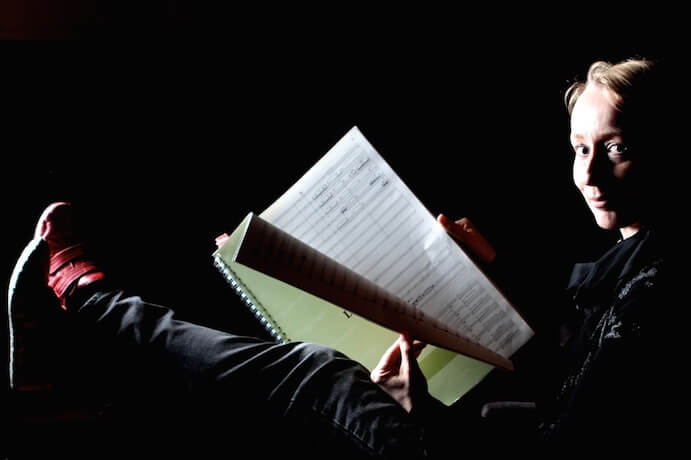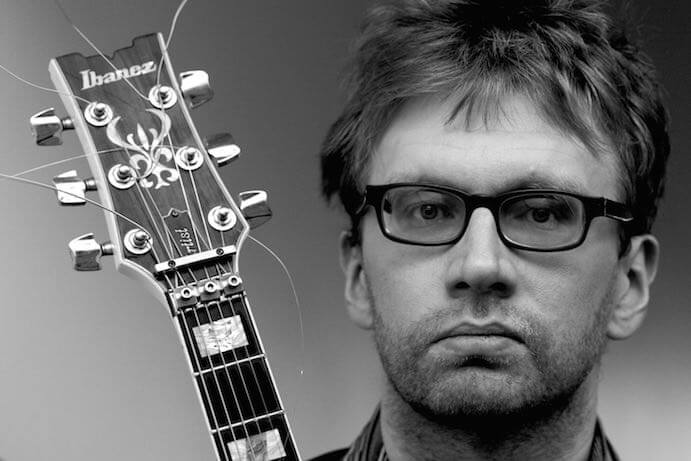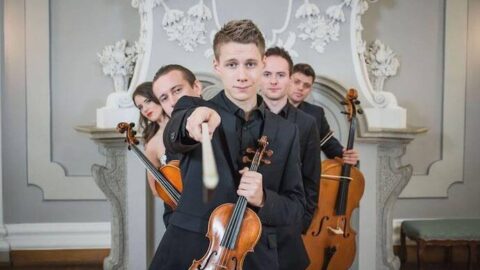It was surprising to see so many people present at the Niguliste Kirik (St. Nicholas Church) on the second night of Tallinn Music Week, considering that I’d had to leave the Estonian president’s “Teenage Wasteland” DJ set early to make it there. The 800-year-old church was partially destroyed during the World War II bombing of Tallinn, and is now used as an art museum and concert hall. That particular night, the church housed an impressive yet less international crowd—local families and groups of young folks—than had been dancing to “Leader of the Pack” with President Ilves. The concert was to include new choral works sung by Collegium Musicale, several pieces performed by lute/organ duo Alina Sakalouskaya and Kadri Ploompuu, and chamber music played by the Järvi Instrumentalists (five siblings who also happen to be second cousins of Kristjan Järvi, who had conducted the Glasperlenspiel Sinfonietta the evening before). All of the acts were local to Estonia, and though these performances were the tamest of the three nights of concerts, they indicated the scope of the craft and sound world of the Estonian contemporary classical scene.
The world première of Mirjam Tally‘s choral work Sinu vari (“Your Shadow”) was brought to life by Collegium Musicale, conducted by Endrik Üksvärav. The Collegium, who commissioned the work, lent shape and expression to the text (in Estonian) by Christina Ehin. During the opening bars, the quiet sound of rattling glass—heard, but not seen—enshrouded the acoustic space within the reverberant church. The acousmatic percussion was quietly joined by swelling organ and heaving sighs from the choralists. As the work progressed, their slowly shifting tones mingled with sharp intakes of air and the sporadic clinking of percussion. The best musical experiences, in my opinion, build a world out of the ephemeral movement of tones; Sinu vari pulls the listener into a house made of breath and voice and slender stones.

Tally’s fragile, pastel-tinted soundscape contrasted with the more traditional, hymn-like Kus on vaikus, sinna koguneb tolm by Jaak Sooäär, also in its world première. Nevertheless, Sooäär’s harmonies reached into the unexpected and resonated throughout the space with a warm, yet wary, spirituality. The voices of the Collegium slid effortlessly between consonance and dissonance and between restlessness and placidity. The next two pieces, both by Tally, seemed to elaborate on and blur the sound worlds introduced by Tally’s première and by Sooäär’s more traditional composition. The vocals became expounded, with echoing whispers and glissandi added in alongside the sighs and long tones. During the final piece, En Strimma Hav (with text by Edith Södergran), repeated ascending lines snatched a final, uplifting ending out of the musty air.

After the briefest of pauses, soprano lute and mandolin virtuoso Alina Sakalouskaya perched herself in the organ loft next to her duo partner, organist Kadri Ploompuu, for a selection of works by Ortiz, Palestrina, Castello, Albinoni, and Vivaldi, all of which was expertly performed. The final performance of the evening consisted of four works performed by the Järvi Instrumentalists. Although their Tchaikovsky and Schubert were excellent, it was Rachmaninoff’s Trio élégiaque and Pärt’s Da Pacem Domine which stood out. Rachmaninoff’s heavy chromaticism and tumbling arpeggios were executed cleanly by the instrumentalists, despite the muddy acoustics of the church. Similarly, the Järvi family brought sensitivity to Pärt’s long tones and chorale-like harmonies. The achingly slow music, melancholy yet peaceful, evoked a grey misty day, with occasional glints of sunshine. It’s a testament to the contemporary and avant-garde performance scene that Da Pacem Domine was the only piece by Pärt I heard while in Estonia. The Tallinn new music scene is young yet thriving, marching to the beat of its own drummer, or to its own healthy pulse.
























